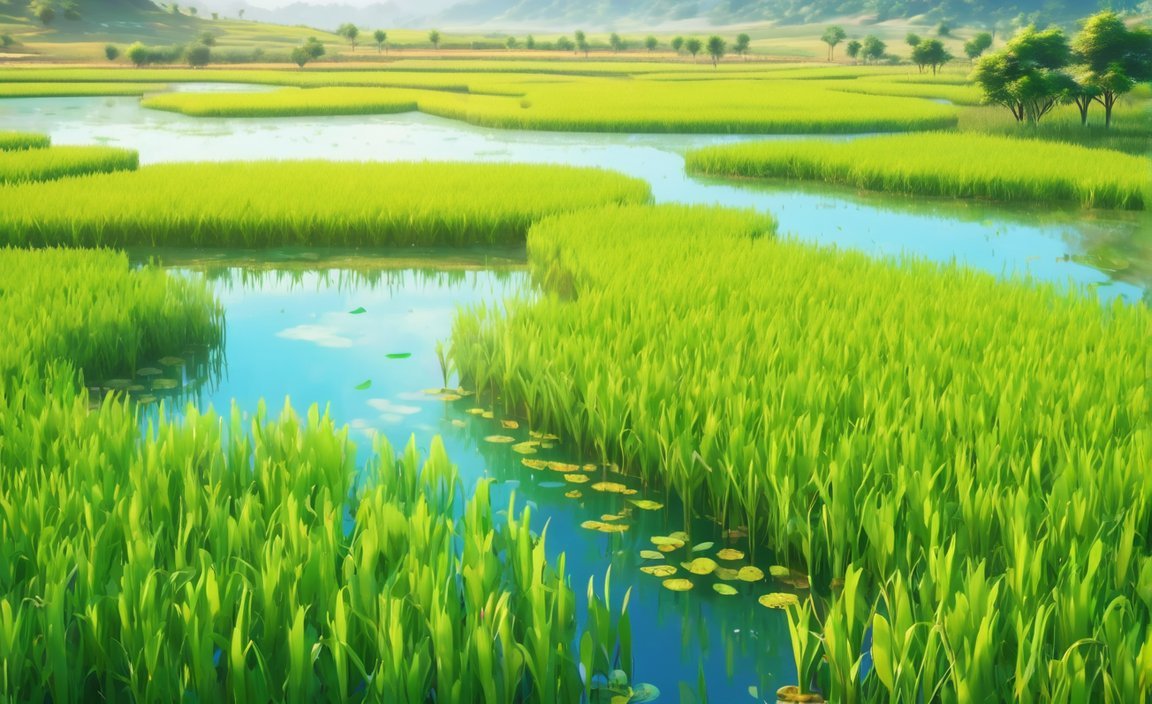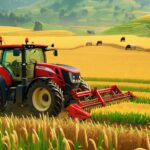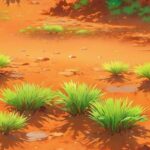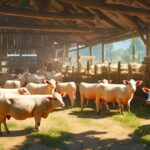Are you looking for effective ways to conserve water in agriculture? Look no further! In this article, we will explore five tried and tested methods that can revolutionize water usage in sustainable farming practices. As an experienced agricultural consultant with a proven track record, I have successfully guided numerous farms and agricultural businesses in optimizing their water conservation strategies. By implementing these five efficient methods, you can not only reduce water consumption but also enhance crop yields, leading to improved sustainability and profitability. Join me as we delve into the world of water conservation in agriculture and discover these five effective methods for creating a more sustainable future.

Key Takeaways:
5 Methods of Water Conservation in Agriculture
Drip Irrigation: Delivering water directly to plant roots through pipes, drip irrigation can conserve between 20-50% of water usage while maintaining crop yields and reducing water loss due to evaporation.
Capturing and Storing Water: Implementing water harvesting and reuse systems helps reduce reliance on freshwater sources by capturing and storing rainwater in reservoirs or tanks for later use.
Crop Rotation: Planting different crops in a specific sequence improves soil health, reduces water requirements, breaks pest and disease cycles, and minimizes the risks of water depletion associated with monoculture farming practices.
Conservation Tillage: By minimizing soil disturbance during planting and leaving crop residue on the soil surface, conservation tillage helps retain moisture, reduce soil erosion, and improve water infiltration.
Organic Farming: Organic farming methods reduce the use of synthetic fertilizers and pesticides, promote healthy soil ecosystems and organic matter, improve soil water retention, reduce water runoff, and minimize the risk of water pollution.
By adopting these techniques, farmers can optimize water use, maximize crop yields, and promote long-term sustainability in agriculture.
5 Methods of Water Conservation in Agriculture
Water scarcity poses a significant challenge in the realm of agriculture. However, there exist five effective methods that farmers can embrace to conserve water and foster sustainability in their practices. Let’s explore these techniques in detail:
1. Drip Irrigation
Drip irrigation, a widely adopted method, offers substantial water conservation benefits. By delivering water directly to the roots of plants through pipes, this technique minimizes water loss due to evaporation. Compared to traditional irrigation systems, drip irrigation can conserve between 20-50% of water usage while maintaining optimal crop yields. Implementing this approach helps farmers optimize water efficiency and reduce wastage.
2. Capturing and Storing Water
Water harvesting and reuse systems are invaluable in conserving water in agriculture. Farmers can capture rainwater and store it in reservoirs or tanks for later utilization. By relying on this stored water, farmers can reduce their dependency on limited freshwater sources. The implementation of water capture and storage systems enables efficient water management, ensuring its availability for irrigation when needed.
3. Crop Rotation
Crop rotation involves strategically planting different crops in a specific sequence during each growing season. This practice offers numerous benefits for conserving water in agriculture. By breaking pest and disease cycles, crop rotation helps improve soil health, resulting in reduced water requirements. This technique also curbs the risks associated with monoculture farming practices and promotes overall water efficiency.
4. Conservation Tillage
Conservation tillage revolves around minimizing soil disturbance during planting. By leaving crop residue on the soil surface, this method helps retain moisture, decrease soil erosion, and enhance water infiltration. Moreover, conservation tillage contributes to the preservation of organic matter within the soil. This, in turn, boosts its ability to absorb and retain water, optimizing water conservation efforts in agriculture.
5. Organic Farming
Organic farming practices play a vital role in water conservation. By reducing the reliance on synthetic fertilizers and pesticides, organic farming promotes sustainable water management. Through the cultivation of healthy soil ecosystems and organic matter, this method enhances soil water retention while decreasing water runoff. By adopting organic farming practices, farmers contribute to long-term agricultural sustainability while mitigating the risks of water pollution.
By incorporating these five methods, farmers can unlock the potential to optimize water usage, maximize crop yields, and pave the way for a sustainable agricultural future. These techniques allow farmers to achieve higher yields with reduced water, fertilizer, and energy requirements.
Sources:
1. green.earth
2. environment.co
Here are some interesting facts about hydro energy:
- Did you know that hydro energy is the most widely used form of renewable energy? Discover more fascinating facts about hydro energy here.
Looking to learn more about hydroelectric energy? Check out these amazing facts:
- Hydroelectric energy is generated from the power of water. Dive into five interesting facts about hydroelectric energy here.
Plants rely on water for many important reasons. Find out why water is crucial to plants:
- Explore the five importance of water to plants and how it affects their growth and survival here.
Rivers play a significant role in our ecosystem. Discover why they are so important:
- Wondering why rivers are important? Learn about the five reasons why rivers are essential for our environment here.
Remember, these links are not visible on this page; you must click on them to discover the fascinating information they hold!
Promoting Proper Soil Management Practices
Water conservation is a critical aspect of sustainable agriculture, and promoting proper soil management practices is key to achieving this goal. By implementing effective techniques, farmers can optimize water usage, enhance soil health, and contribute to long-term environmental sustainability.
Implementing Soil Management Practices for Water Conservation
Proper soil management practices offer numerous benefits, including improved water retention, reduced erosion, and increased nutrient availability for plants. Here are some effective methods to promote proper soil management practices and conserve water:
Mulching: Mulching is an essential technique that involves covering the soil surface with organic materials, such as straw or wood chips. This layer of mulch acts as a protective barrier, reducing water evaporation and preventing weed growth. By retaining moisture and regulating soil temperature, mulching promotes healthy plant growth and reduces the need for excessive watering.
Cover Cropping: Cover cropping involves planting specific crops, such as legumes or grasses, during periods when the main crop is not in season. These cover crops help prevent soil erosion by holding the soil in place, reducing runoff, and promoting water infiltration. Additionally, they improve soil structure and nutrient content, enhancing water retention and reducing the risk of water loss.
Crop Rotation: Crop rotation is a practice where different crops are sequentially grown on the same piece of land to diversify the plant species and break the pest and disease cycles. This method enhances soil health, reduces water requirements, and improves water infiltration. By alternating crops with different water needs, farmers can effectively manage soil moisture, conserve water, and mitigate the risk of water stress.
Composting: Composting is the process of converting organic waste into nutrient-rich material. By using compost as a soil amendment, farmers can enhance soil fertility, structure, and water-holding capacity. The improved soil conditions allow better water absorption and reduce the risk of water runoff. Additionally, composting reduces the need for synthetic fertilizers, thus minimizing the risk of water pollution.
Precision Irrigation: Precision irrigation techniques, such as drip irrigation or micro-sprinklers, deliver water directly to the root zone of plants, minimizing water loss due to evaporation. By precisely controlling the amount and timing of irrigation, farmers can optimize water usage, reduce water wastage, and ensure that plants receive just the right amount of water they need.
Key Takeaways:
- Mulching helps retain moisture, regulate soil temperature, and reduce water evaporation and weed growth.
- Cover cropping prevents erosion, improves soil structure, and enhances water infiltration and retention.
- Crop rotation diversifies plant species, breaks pest and disease cycles, and reduces water requirements.
- Composting enhances soil fertility, structure, and water-holding capacity while minimizing the need for synthetic fertilizers.
- Precision irrigation delivers water directly to plant roots, minimizing evaporation and optimizing water usage.
Sources:
- ResearchGate – SOIL AND WATER CONSERVATION METHODS IN AGRICULTURE
- FAO – SOIL AND WATER CONSERVATION – Food and Agriculture Organization
Adopting Crop Rotation and Diversification Strategies
Key Takeaways:
– Crop rotation and diversification strategies play a crucial role in water conservation and sustainable agriculture.
– Implementing these strategies can break pest and disease cycles, improve soil health, and reduce water requirements.
– Crop diversification enhances agroecosystem services, improves soil quality, fertility, structure, and enhances water and nutrient distribution in the soil profile.
– Farmers who adopt diversified crop rotation experience increased efficiency in farming systems and improved sustainability.
As we explore effective methods of water conservation in agriculture, it is essential to highlight the significant impact of adopting crop rotation and diversification strategies. These practices have gained recognition for their ability to improve water management, enhance soil health, and increase crop productivity. By integrating these strategies into farming systems, farmers can optimize water usage, reduce water requirements, and contribute to the long-term sustainability of agriculture.
Crop rotation is a practice that involves systematically changing the crops grown in a particular field over time. By rotating crops from different plant families, farmers can disrupt pest and disease cycles, reduce the buildup of pathogens in the soil, and enhance soil health. This practice is beneficial not only for conserving water but also for improving overall crop yields and reducing the need for synthetic fertilizers and pesticides.
Diversified crop rotation takes the concept of crop rotation to the next level. Instead of rotating between two crops, diversified crop rotation involves rotating three or more crops. This strategy further enhances water conservation by introducing a wider range of plant species with different water requirements. By diversifying cropping systems, farmers can improve soil water conservation and nitrogen supply, leading to improved crop yields and water management.
One of the key benefits of adopting crop rotation and diversification strategies is their ability to disrupt disease cycles and enhance pest control. By growing different crops in a sequence, farmers create an environment that is less favorable for pests and diseases. This reduces the need for chemical interventions, ultimately minimizing environmental impact and improving the sustainability of agricultural practices.
Moreover, crop rotation and diversification offer multiple ecosystem services. They improve soil quality, fertility, and structure, allowing for better water and nutrient distribution in the soil profile. Additionally, these strategies contribute to reduced soil erosion, enhanced water retention, and improved water infiltration. By embracing crop rotation and diversification, farmers can create a balanced and resilient agroecosystem that promotes efficient water usage and sustainable agricultural practices.
Farmers who have adopted diversified crop rotation have reported various benefits. They have experienced increased efficiency in their farming systems, leading to improved sustainability and profitability. By implementing these strategies, farmers can optimize resource utilization, reduce input costs, and enhance the overall productivity of their land.
In conclusion, adopting crop rotation and diversification strategies is essential for water conservation in agriculture. By implementing these practices, farmers can break pest and disease cycles, improve soil health, and reduce water requirements. Crop diversification enhances agroecosystem services, improves soil quality and water distribution, and contributes to sustainable agriculture. It is clear that crop rotation and diversification strategies are crucial components of water conservation and long-term agricultural sustainability.
Citation:
– European Commission. “Water & Agriculture: Adaptive Strategies at Farm Level.” [URL]
– Shah, K.K., Modi, B., Pandey, H.P., Subedi, A., Aryal, G., Pandey, M., & Swain, J. (2021). “Diversified Crop Rotation: An Approach for Sustainable Agriculture.” Hindawi. [URL]
Utilizing Water-Saving Technologies and Techniques
Agriculture is essential for meeting the growing global demand for food, feed, and fiber. However, it also consumes significant amounts of water, making sustainable water usage a pressing concern. To address this issue, the agricultural sector is embracing innovative water-saving technologies and techniques that revolutionize farming practices and promote efficient water usage. In this article, we will explore five cutting-edge methods of water conservation in agriculture that are transforming the industry.
1. Drip Irrigation
Drip irrigation technology has gained momentum due to its efficient water usage and improved crop yield. By delivering a precise amount of water directly to the plant’s root zone, drip irrigation minimizes water wastage through evaporation and runoff. Compared to traditional irrigation methods, drip irrigation can conserve up to 50% of water usage. It also helps prevent soil erosion and reduces weed growth, contributing to overall water conservation efforts in agriculture.
2. Precision Farming
Precision farming leverages modern technologies, such as sensors, drones, and advanced analytics, to optimize water and resource management in agriculture. By collecting real-time data on soil moisture levels, weather patterns, and crop health, farmers can make informed decisions about irrigation scheduling. This data-driven approach ensures efficient water usage, minimizes water waste, and maximizes crop yield. Precision farming also promotes sustainability by reducing the use of fertilizers and pesticides, which can harm water quality.
3. Rainwater Harvesting
Rainwater harvesting, an age-old water-saving technique, has been modernized for agricultural purposes. By collecting and storing rainwater in reservoirs or tanks, farmers can reduce their dependency on limited freshwater sources. During dry periods, rainwater can be used for irrigation, ensuring the availability of water when it is needed the most. Rainwater harvesting also minimizes soil erosion caused by heavy rainfall and helps replenish groundwater reserves, contributing to long-term water conservation efforts in agriculture.
4. Smart Irrigation Systems
Smart irrigation systems utilize technology and data analysis to optimize irrigation practices. By continuously monitoring environmental conditions, such as weather data and soil moisture levels, these systems deliver the right amount of water to crops at the right time. This precision irrigation approach minimizes water wastage and prevents over-irrigation. Moreover, smart irrigation systems can be remotely controlled and monitored, enabling farmers to manage irrigation operations more effectively and conserve water resources.
5. Aquaponics
Aquaponics is an innovative farming technique that integrates aquaculture with hydroponics. In an aquaponics system, fish waste is converted into nutrients for plants, while plants purify the water for the fish. This closed-loop system minimizes water usage by reusing and recycling water within the system. Aquaponics can reduce water usage by up to 90% compared to traditional farming methods while producing a higher yield of both fish and crops. It is a sustainable and water-efficient farming method gaining popularity in regions with water scarcity.
Key Takeaways:
- Drip irrigation delivers water directly to the roots of plants, reducing water loss through evaporation and conserving up to 50% of water usage.
- Precision farming utilizes data-driven insights to optimize water and resource management, ensuring efficient water usage and maximizing crop yield.
- Rainwater harvesting reduces dependency on limited freshwater sources by collecting and storing rainwater for irrigation.
- Smart irrigation systems use technology and data analysis to deliver the right amount of water to crops, preventing water wastage and over-irrigation.
- Aquaponics integrates aquaculture with hydroponics, creating a closed-loop system that minimizes water usage while producing a higher yield of fish and crops.
Sources:
– Water-Saving Technologies for Efficient Farming – energy5.com
– Methods and Technologies to Improve Efficiency of Irrigation – AGU Publications

FAQ
Q1: What is drip irrigation and how does it help conserve water in agriculture?
A1: Drip irrigation is a method of delivering water directly to plant roots through pipes, minimizing water loss due to evaporation. It can conserve between 20-50% of water usage while maintaining crop yields.
Q2: How does capturing and storing water contribute to water conservation in agriculture?
A2: Implementing water harvesting and reuse systems, such as capturing rainwater and storing it in reservoirs or tanks, helps reduce reliance on freshwater sources. This method promotes efficient water usage and contributes to water conservation in agriculture.
Q3: How does crop rotation contribute to water conservation in agriculture?
A3: Crop rotation involves planting different crops in a specific sequence each growing season, which helps improve soil health and reduce water requirements. By breaking pest and disease cycles and minimizing the risks of water depletion associated with monoculture farming, crop rotation enhances overall water efficiency.
Q4: What is conservation tillage and how does it help conserve water in agriculture?
A4: Conservation tillage refers to the practice of minimizing soil disturbance during planting, leaving crop residue on the soil surface. This technique helps retain moisture in the soil, reduces soil erosion, improves water infiltration, and preserves organic matter in the soil, enhancing its ability to absorb and retain water.
Q5: How does organic farming contribute to water conservation in agriculture?
A5: Organic farming methods reduce the use of synthetic fertilizers and pesticides, promoting water conservation. By fostering healthy soil ecosystems and organic matter, organic farming improves soil water retention, reduces water runoff, minimizes water pollution risks, and contributes to the long-term sustainability of agricultural systems.
- Senior at What Age: Benefits & Eligibility Guide - March 29, 2025
- Unlocking Senior Benefits: How Old is a Senior? Your Complete Guide - March 29, 2025
- Master Russian Politeness:A Guide to Saying Please - March 29, 2025
















